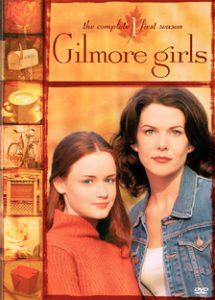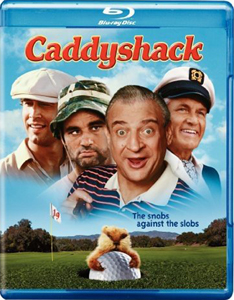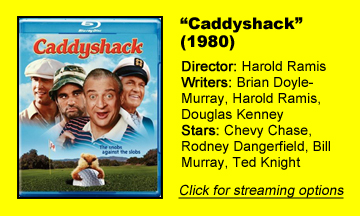Director/co-writer Harold Ramis and actor Bill Murray continue their march from “Meatballs” to “Ghostbusters” with “Caddyshack” (1980), which itself is considered a comedy classic. Should it be? For me, a great comedy has consistent momentum from gag to gag; a good comedy has big laughs but also slow stretches. “Caddyshack” is firmly in the category of “good, not great, comedy.”
A veteran and a newcomer
It’s driven by Ted Knight and Rodney Dangerfield more so than Murray, Chevy Chase or the animatronic gopher that pesters Murray’s Carl. Knight was a comedy veteran from “The Mary Tyler Moore Show” and he knows how to make country club head Judge Smails into someone humorously absurd while also serving the plot purpose as the villain. Lines that are unfunny on the page, like “Well, we’re waiting!,” have become imminently quotable.
Dangerfield, on the other hand, was a cinematic novice at the time. But just by doing a riff similar to his standup act, his Al Czervik steals the show.
Ramis and co-writers Brian Doyle-Murray (who also plays the caddies’ boss) and Douglas Kenney also give Al funny props such as his golf bag that’s equipped with pop-up club releases, a telephone and a radio – which allows everyone to boogie to Journey’s “Any Way You Want It” on the course (something “The Simpsons” riffed on in a 1996 episode).
Golf is naturally funny
“Caddyshack” doesn’t have to try too hard to make golf funny. Al and others (Judge Smails’ favorite “club” is the foot wedge) casually break course rules and protocol, and it’s not long before we’re viewing the grand old game as absurd rather than sacred.
The mentally addled Carl’s battle with the clever gopher – cutely rendered by the effects team led by John Dykstra (“Star Wars”) – is famous, but I find this arc to be the dullest part of the film. Still, I acknowledge that at least some of this stuff is needed to provide a forward-moving narrative.
The main plot ostensibly follows Danny (Michael O’Keefe) in his quest to win the judge’s favor (and thus a scholarship), which comes down to a high-stakes golf match at the end.
Laughs in the margins
But “Caddyshack’s” laughs come from sidebars, whether it’s Al acting uncouth at a country club party, or the judge chasing Danny around his house with a golf club after catching him with his niece Lacey (Cindy Morgan), or Chase’s suave Ty Webb also making time with Lacey. I wondered “Is this the same blonde in all these sex scenes?” It is; Lacey’s unexplained promiscuity is intended as a gag.
While there’s the slightest hint of Clark Griswold and Fletch in Ty, he’s ultimately an unfocused character – first great at golf, later not, without much explanation. Chase and Murray share one scene, added late in the game because the filmmakers decided the two stars should have a scene together, and it’s not particularly good.

“Caddyshack” has timeless moments – Dangerfield’s shtick, the Baby Ruth bar in the pool, the reverend who renounces God after missing a clutch putt – and quick funny gags like the judge’s nephew barfing into a sunroof. It also whiffs a fair amount, although the vibes are good enough that I’m always willing to grant a mulligan.
All told, “Caddyshack” is a round of birdies and bogies that ultimately settles around par as it sticks it to a sport that – especially back then — could stand to lighten up.


